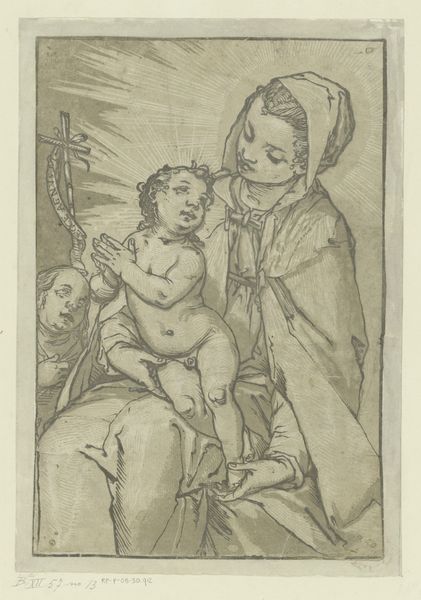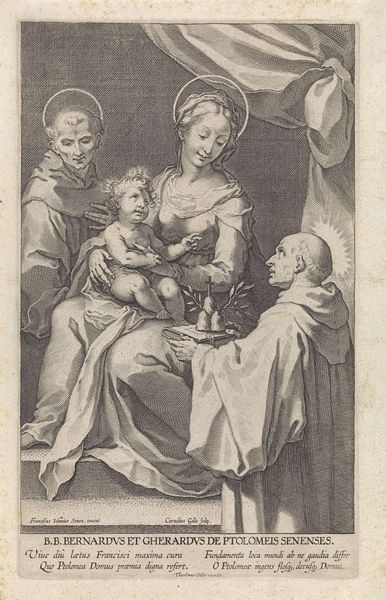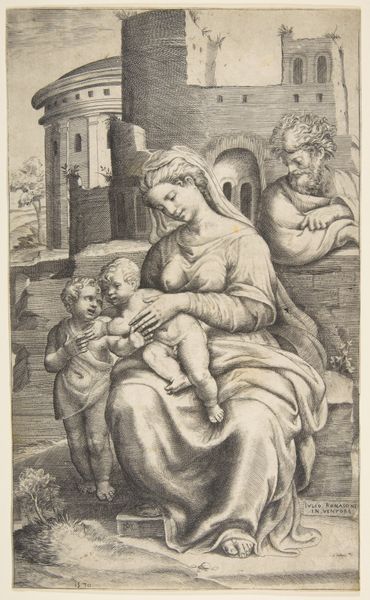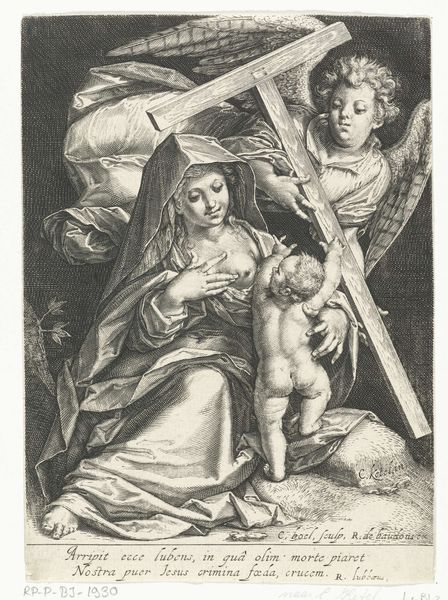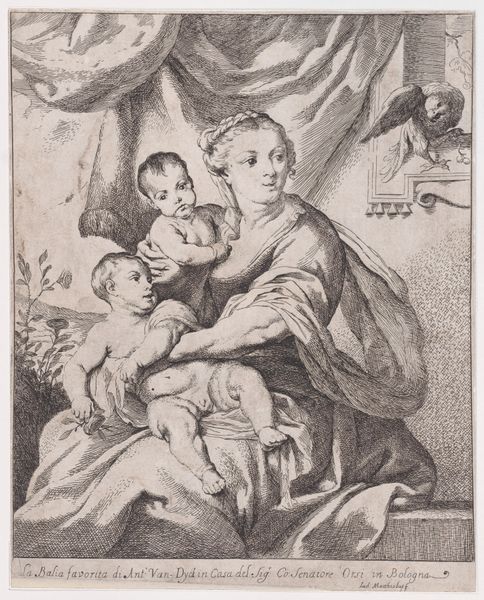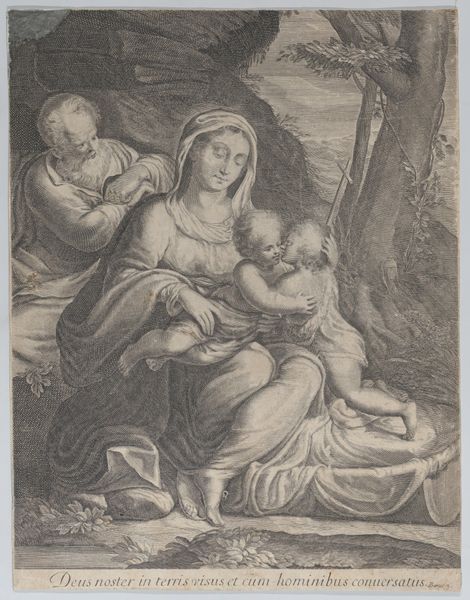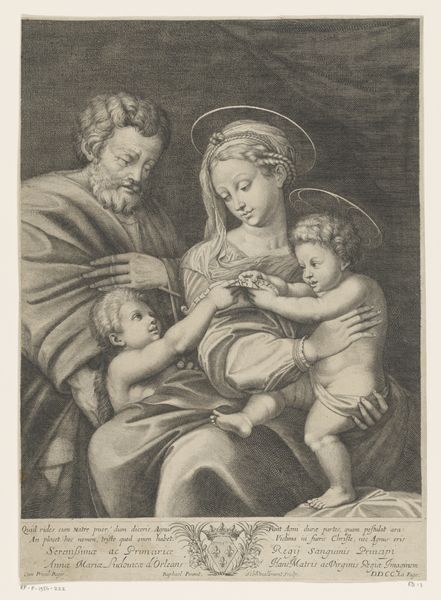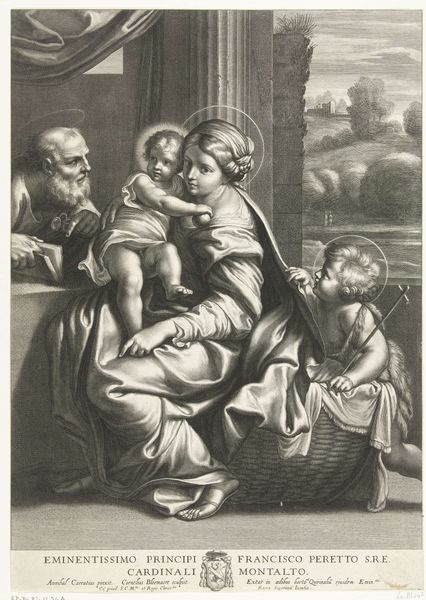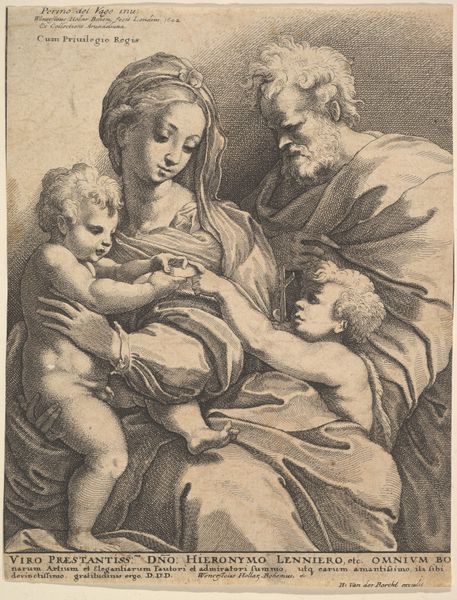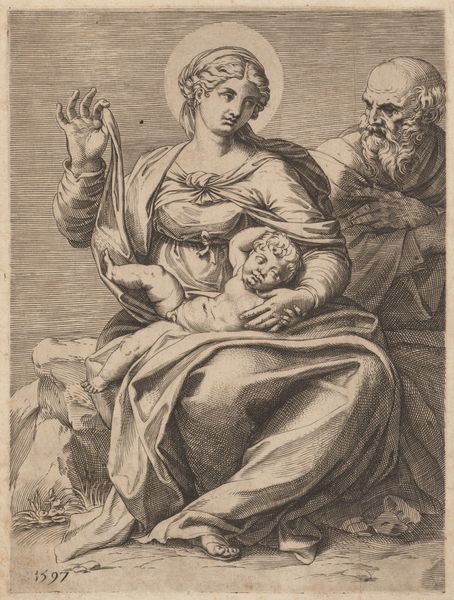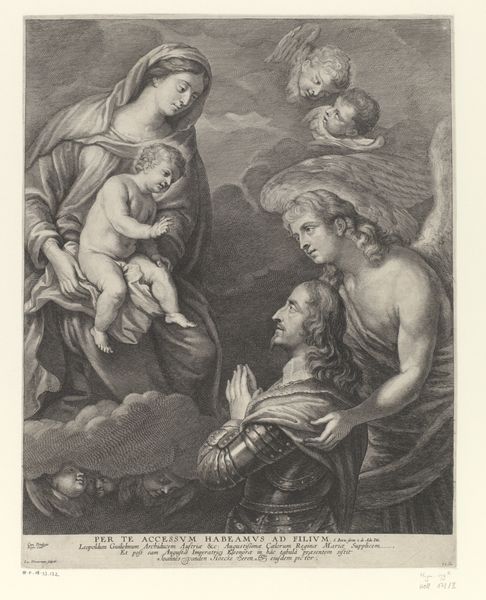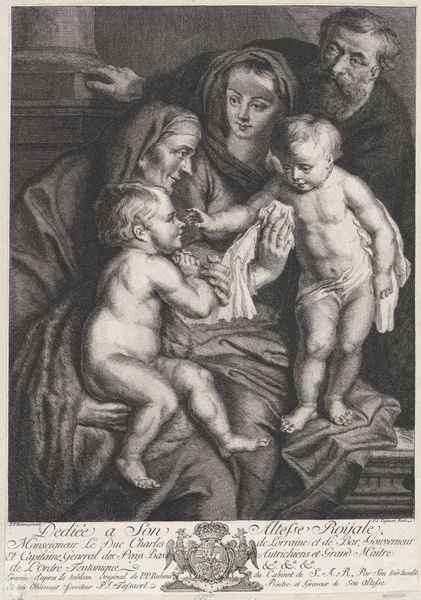
The Virgin and Child adored by Saint Carlo Borromeo, who kisses her hand 1705
0:00
0:00
drawing, print, engraving
#
drawing
#
baroque
# print
#
history-painting
#
italian-renaissance
#
engraving
Dimensions: Sheet (Trimmed): 14 3/16 × 10 1/16 in. (36.1 × 25.6 cm)
Copyright: Public Domain
Editor: This is "The Virgin and Child adored by Saint Carlo Borromeo, who kisses her hand," an engraving by Hieronymus Ferroni from 1705. The composition is quite formal, almost staged, but it also seems to overflow with a very emotional display of religious ecstasy. What strikes you when you look at this piece? Curator: It's the intersection of power, piety, and representation. Saint Carlo's devotion is not just personal; it's a performance for the Church, for potential patronage. Note the composition – Mary is central, literally embodying power, while Saint Carlo venerates her, solidifying the Church's authority. How does this act of devotion influence contemporary understandings of the relationship between the powerful and those they claim to serve? Editor: So you're saying it's not just about religious devotion, but also about social and political positioning? I guess I assumed the religious context would have been the complete narrative, at the expense of thinking about its real-world impacts. Curator: Absolutely. Religious imagery during the Baroque era often reinforced social hierarchies. Consider the gendered power dynamics. Mary, despite being central, is primarily valued for her role as a mother. How might a feminist perspective challenge this portrayal? What is this piece trying to convey about the relationship between faith, power, and gender? Editor: It seems the engraving invites questions about the social role of religion at the time, as well as potentially critiquing its role in reinforcing power imbalances, especially based on gender. That wasn’t necessarily something I had considered when looking at religious iconography. Curator: Exactly. By engaging with the historical and theoretical contexts, we uncover how these images functioned within their time and how they continue to impact us today. The visual is never neutral. Editor: This definitely opens up a different way of thinking about religious art; I’ll keep this in mind next time!
Comments
No comments
Be the first to comment and join the conversation on the ultimate creative platform.
